Experts always have opinions. As they should. Any expert worth his or her salt will have strong views regarding their areas of expertise, and any expert who isn’t opinionated is either holding back or being disingenuous. In fact, an “expert” without opinions likely isn’t an expert at all, which is something you should consider going forward.
With that in mind, I want to share some relatively detailed thoughts about fly rods for trout.
Rod Weights
You can’t trust most fly rod brands when they describe their rods as 4 weights, or 5 weights, or 6 weights. Sorry, but that’s just the way it works right now. We live in an age when manufacturers are building fly rods that are faster and stiffer and harder to bend than ever before. As a consequence, line manufacturers are making, and selling, lines that are heavier than their listed weights in order to help those too-stiff rods flex and load properly. (Or, in certain cases, flex and load at all.)
What does that mean? Well, some 4 weight rods really are designed to cast actual 4 weight lines. But many aren’t. They’re built to cast 4.5 weight lines, or 5 weight lines, or 5.5 weight lines, or even 6 weight lines. The same scenario applies to lighter and heavier rods. It’s a complete crapshoot whether your new 9’ 5 weight will cast an actual 5 weight line reasonably well at normal fishing distances, or whether it should really be labeled as a 6 weight or even a 7 weight.
I wish that there was some sort of magic fix for the current situation, but there doesn’t seem to be. The only way to find out whether any particular rod is labeled correctly by the manufacturer is to cast it with a true-to-weight fly line — for example, a Scientific Anglers Mastery Double Taper or a RIO Lightline Double Taper — and see if it bends easily, and casts effectively, from 20’ to 45’. Caveat emptor, my friends, and good luck.
There is, however, one “tell” that you can use to help yourself right out of the gate. If a rod manufacturer describes a rod as a moderate or medium action, then the odds are good that the rod will be accurately labeled when it comes to line weight. A well-designed and well-built moderate action 4 weight will, if the manufacturer is reasonably competent and isn’t consciously misleading you, cast an actual 4 weight line effectively at typical fishing distances.
Conversely, a rod that’s described as fast and/or stiff will generally not be labeled accurately. Fast action rods will often be off by a line size or more, so your fast action 4 weight rod may fare better with a 5 weight line, or even a 6 weight line. As for medium-fast rods — and there are a bunch of rods labeled as medium-fast — who knows? Without casting them, it’s almost impossible to say for sure.
Lightweights and Heavyweights
You don’t need a 1 weight fly rod to fish for trout. Nor do you need a 2 weight or a 3 weight. And unless you’re fishing Alaska (or someplace similar) for extremely large fish, you won’t need a 7 weight or anything heavier. To be frank, you can fish for trout across the Lower 48 for the next 20 years and never need anything lighter than a 4 weight or heavier than a 6 weight. If you’re a good caster and you don’t spend most of your time on spring creeks and tiny streams, a true-to-the-standard 5 weight will suffice for the majority of your angling.
Which doesn’t mean that you shouldn’t buy a new 3 weight if you’re convinced that doing so will make you happy. But you don’t need a 3 weight — or any other specialty rod — to catch trout south of the Canadian border.
Long and Short Rods
There’s nothing wrong with graphite rods shorter than 8’ or longer than 10’. Unless you fish brush-choked or tree-lined creeks on a regular basis, though, you won’t need short rods for your angling. Nor, I should mention, will you need longer rods. A good angler can fish the vast majority of our streams and rivers with an 8’6” or 9’ fly rod.
Favor Rods that Bend Deep
A fly rod’s design and materials determine its action. There are any number of ways that a fly rod can bend, and rod manufacturers have the ability to build models that flex mainly in the tip, or through the mid-section of the rod, or all the way down to the cork. If you’re a great caster, you obviously don’t need my advice. If you’re not, though, you might want to be wary of rods that flex mainly in the tip. As a general rule, rods that bend through the mid-section and down into the butt are easier and more enjoyable to cast.
Casting Fly Rods Should Be Fun
Here’s a news flash. Fly casting should be fun. It should not, however, be overly-strenuous or, even worse, an exercise in masochism. Assuming that your rod and your line are well-matched, the two things that will determine the efficacy of your casting are your fly rod and your skill level. You should work on your casting skills until you’re as good as you hope to be, and you should fish rods that make your casting and angling more enjoyable rather than less so. More often than not, fast action rods will make you work harder at the same time they limit your enjoyment of the sport. My advice is to steer clear of fast and ultra-fast rods unless you’re a great caster.
Price Doesn’t Determine Quality
There’s no correlation between price and performance, at least when it comes to fly rods. My favorite fly rods — I’m a huge fan of Montana Brothers rods — run about $925 per rod. At the same time, I’d be stoked to fish a Redington Classic Trout that costs about $170. And keep in mind that you can find mediocre-to-terrible rods at pretty much any price point. Spending a lot, or a little, on a particular rod doesn’t guarantee anything at all.
Finally, I’d like to close with a word of caution. Lots of anglers — including some who don’t cast very well — will offer you all sorts of advice on which rods to purchase and which ones you should avoid. You’re welcome to listen to whoever you want, of course, but it might pay to steer clear of uninformed opinions and marketing hype the next time you’re in the market for a fly rod.







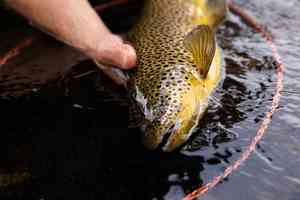







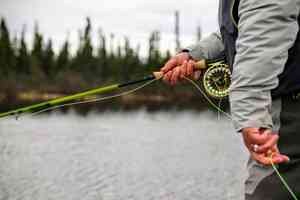

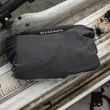

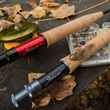
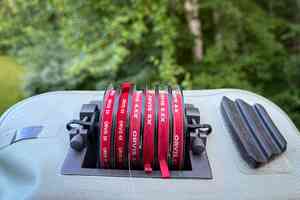







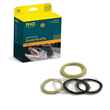
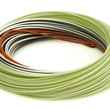
Comments
Ariel replied on Permalink
Let's take a walk down the isles at Walmart and stop at the $59.99 Fenwick 5wt fly rod. Picked it up while fishing the San Juan. Need a rod to carry my sinking line and streamers into the depths. Since I was nervous about ruining my Helio 10/4 rod....this seemed like the perfect deal: Rod, plastic reel, lined. And yes it did fish well...and yes I had to adjust my casting form...and, and most important, it caught monsters all day long. $59.99 Frig'n dollars!!!!!
Cheryl replied on Permalink
A nice summary of the current market. As a Certified Castinng Instuctor I see student with rods inappropriate for learning all the time. You covered the issue with fast/ultrafast rods, but I also see students that have bought into the idea that they will learn more faster if they cast old fiberglass rods as they will reveal all errors. IMHO there was a reason to retire those old rods, they introduce casting problems students are not ready to tackle. A medium action rod is what I like to use with students. Students can feel the load without introducing tailing loops and deflection from overloading the tip.
Don Andersen replied on Permalink
Mr. Taner must live in my pocket. Some graphite rods have been miss labelled for the past 30 years. Now some the line guys after my hissy fit all over the web are marking on the box. "True to Line weight" except for Rio. In a comparison of 6 wt. lines 2 years ago Cortland was about 1/2 were marked correctly Sci. An. 75% and Rio nearly none.
.
Chester Allen replied on Permalink
This article is a must-read for most fly anglers -- including me. I have never fished a dry fly with my entire fly line on the water, but lots of anglers like to bomb out long casts when trying out a trout fly rod. I have seen many anglers with fast rods break off nice fish because the rod couldn't protect a 6x tippet. Moderate-action rods are fantastic and fun. And, yes. I do own a Montana Brothers 4-weight. Best rod I've ever cast.
Geoff Roznak replied on Permalink
The article states:
"The only way to find out whether any particular rod is labeled correctly by the manufacturer is to cast it with a true-to-weight fly line — for example, a Scientific Anglers Mastery Double Taper or a RIO Lightline Double Taper — and see if it bends easily, and casts effectively, from 20’ to 45’."
...and while that's one way to do it, there's another, better, cheaper, much more accurate way to get there: Run your new rod through the "Common Cents" system.
It measures your rod using weight (bags of pennies that you count out) and spits out a grain weight for the line to use on the rod that's pretty close to spot on.
More info here: https://common-cents.info/
Bolderado replied on Permalink
Hey Todd, good article about rods and the trend for stiffer flex and the fact that price no longer determines quality. The one area where I disagree is the need for lighter rod, specifically a 3 wt. My 3wt G2 is my go-to anytime I need to fish to big fish with small flies and light tippet. I used to fish my 5wt or even my 4wt on the Ranch section of the Henry's Fork as an example. But, I like many others have had many break-offs on the hook set, the head shake, or the last run. So I started fishing my 3wt several years back and have not had a break-off at the Ranch on 5.5X or 6X since. The 3wt buys you some incredible tippet protection and the by-product of using that rod is stealthier presentations and more accurate casts. No doubt that the 5wt is the best utility rod for heavy nymph rigs and casting single streamers with floating lines. It is also perfect for casting hopper/ dropper rigs. But on the other end, casting double streamer rigs with sinking line from a drift boat, has caused me to ditch my 6wt in favor of a 7wt. The 6wt was too much work! All of your other points were excellent!
Alan Maki replied on Permalink
Why doesn’t the author cite specific brands and models and companies. This doesn’t sound like an article by an “expert” on fly rods to me. Cite some specific brands and models.
Chad Shmukler replied on Permalink
Pages